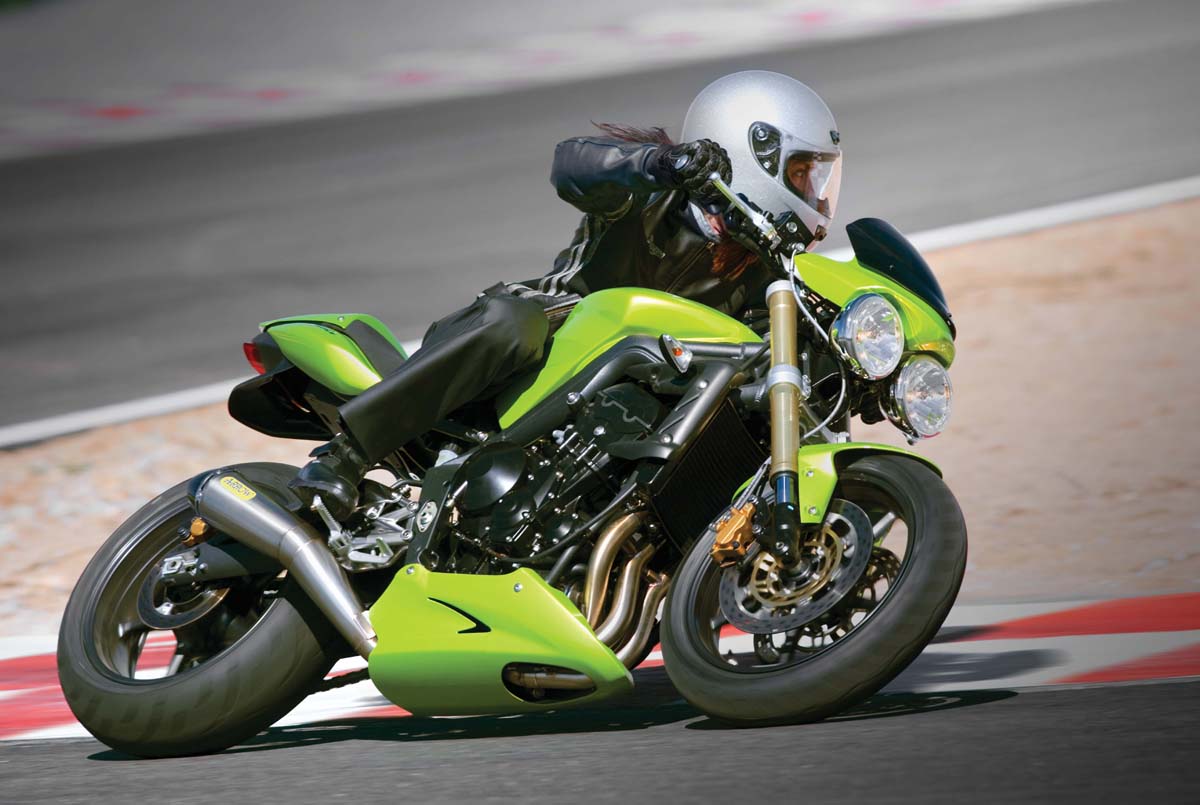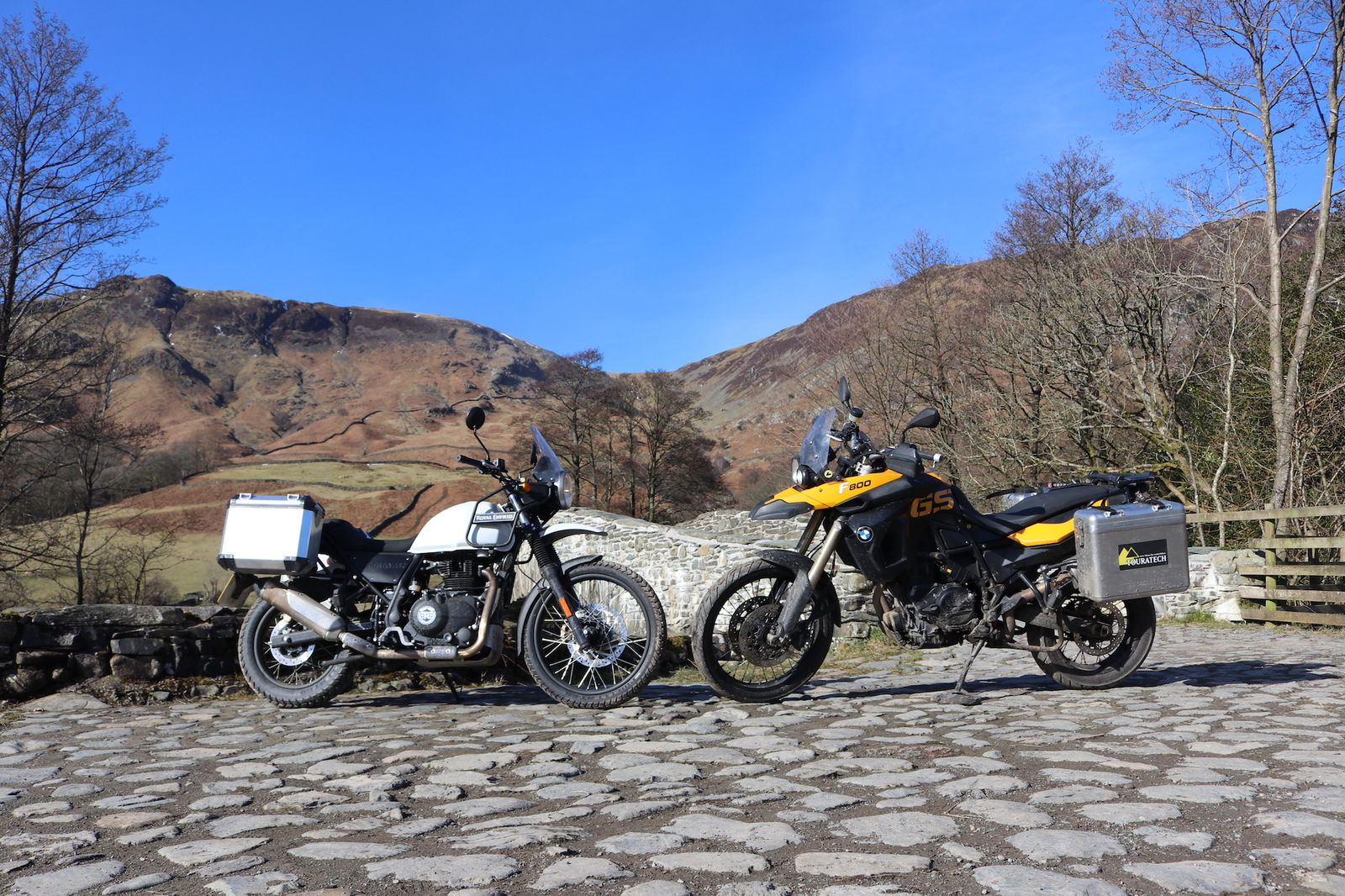Fireblade: Old vs New
Back to the future...

THE test of a truly great technology comes when you try to think of life without it. I was born in 1971, so spent my first 27-odd years without the Internet, a smart phone, email or digital photography. Now, I can remember living without those things, and I know I functioned well enough. I sent faxes at work, I read encyclopedias to find things out, I used payphones, and I took 35mm films to SupaSnaps to see how shit my photos were. But I don’t think I can really understand what life was like without those things. My modern man's brain has been subtly, but irrevocably, changed by Apple, Canon, Google, Facebook, Firefox, Outlook…
And when it comes to bikes, you could argue the same goes for the Honda FireBlade. I know there was a time when a litre-class sportsbike meant 220 kilograms, and 125bhp. When you had to trade off handling and chassis prowess for that power, and go for a 750 or a 600 if you had any ambitions for going fast through a bend. But after the original 1992 FireBlade, none of us had to do that any more. The good bad old days of FZR1000R EXUPs, GSX-R1100s and ZZ-R1100s being the top of the tree were gone, and riding the new 'Blade was like using Google Maps instead of an AA Road Atlas. But thinking of riding bikes in that world is incredibly hard for my modern biking self to get its head around…
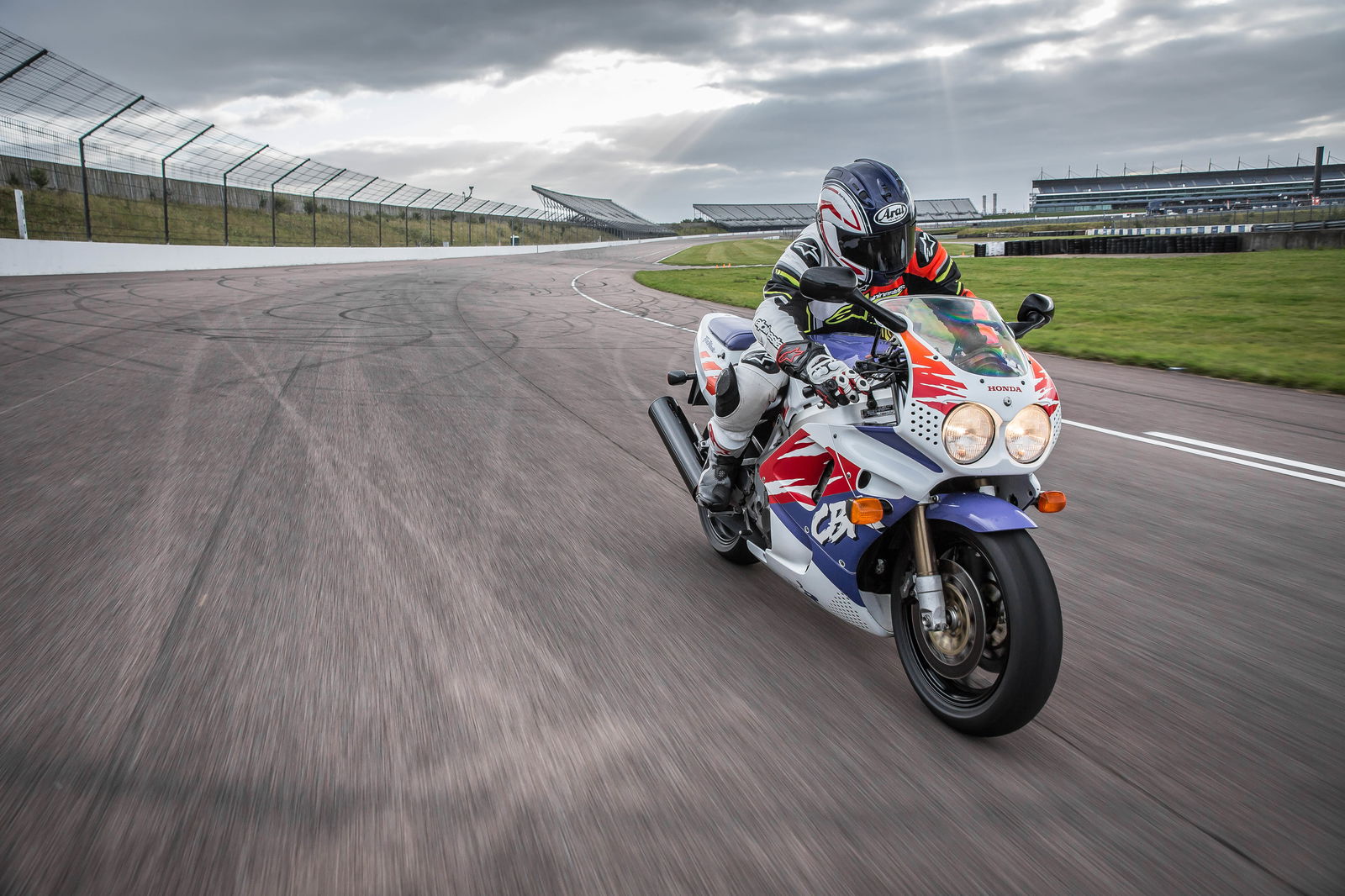
Now, on paper, there might not seem a huge difference between 1991 and 1992 – 185kg and 118bhp doesn't seem so far from the 209kg and 125bhp of Yamaha's contemporary FZR1000. But the new bike was a genuine stunner, giving 600-class control with (essentially) litrebike power. The weight loss helped everywhere – braking, acceleration, cornering – and showed the rest of the firms where they needed to go next.
Fast forward 25 years, and Honda's got a new 2017 Fireblade. It's nowhere near as big a leap as the original of course – but it's a totally different beast from its ancestor, festooned with electronic aids and with 70bhp more peak power. Honda UK had a celebration event for the Blade's 25th birthday last week, and we got another chance to ride the new bike, together with the firm's own original 1992 bike, on track at Rockingham and on the roads nearby.
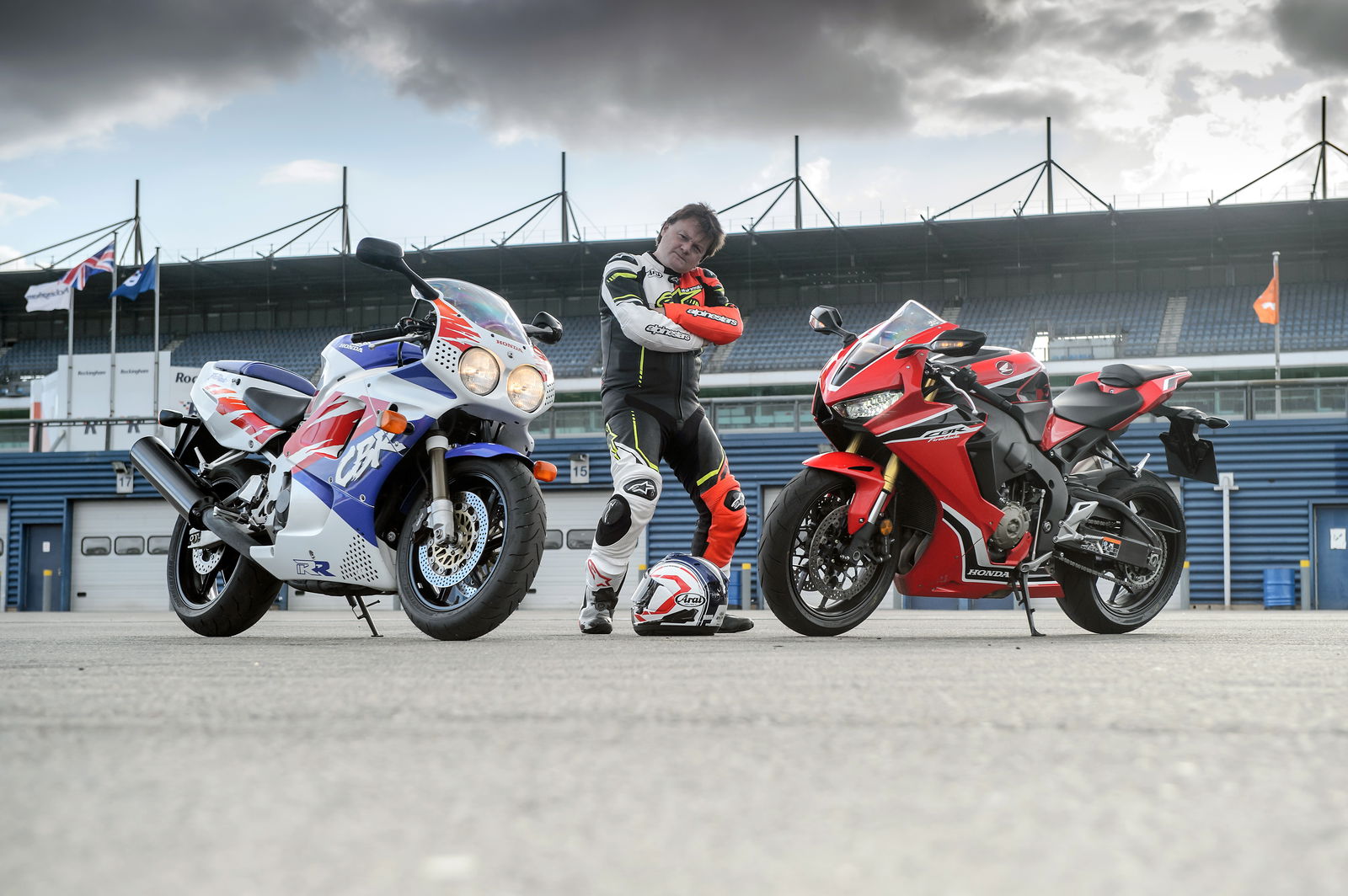
I got the golden ticket to go along – and I was well excited by the prospect. It’s a bit of a weird one – of course, I've ridden several original FireBlades over the years, and I'd say I'm pretty solid on how it goes. But most of those old bikes have been slightly-tired secondhand dealer bikes, without much in the way of love or prep, so I was looking forward to riding Honda's own '92 bike, with low miles, new tyres and decent setup.
We rode the old bikes on the road first. Honda had a selection of heritage FireBlades on the day, so I also got a spin on the '96 FireBlade, the '98 FireBlade, the 2000 FireBlade and the 2006 Fireblade, as well as the original. But it was the 893cc 92 model I focussed on. It's a real nostalgia trip as soon as you swing a leg over – the trio of dials for speed, rpm and engine temp plus a small offset rectangle of idiot lights, (and the big old 'CHOKE' button), the ignition switch with no HISS immobiliser surround, and no wacky light show when you turn the key – not even the whirr of a fuel pump or ABS unit. The dynamics aren't so strange though. Pull in the clutch lever, press the start button, click down into first, and you're off. Simple, basic, satisfying stuff, and I'm in a happy place as we ride away from Corby into the open roads up towards Leicestershire.
The throttle feels a little strange after so many miles on ride-by-wire superbikes – a Bowden cable and mechanical pulleys, together with a stiff old return spring gives a heavier, coarser feel than a slick angular-position sensor twistgrip. Carburettors had a massive edge over fuel injection back in 1992, when only a few weird old Kawasakis, Ducati superbikes and BMW K-series Bricks used it on mainstream bikes. But even in the early 2000s, carbs still held their own over early EFI systems, which could be snatchy, jerky beasts. Like digital cameras versus film though, the latest injection setups match or exceed their analogue ancestors in terms of rideability and throttle feel. The old Blade has lovely fuelling, although it's not really any better than what we get today on a 2017 superbike.
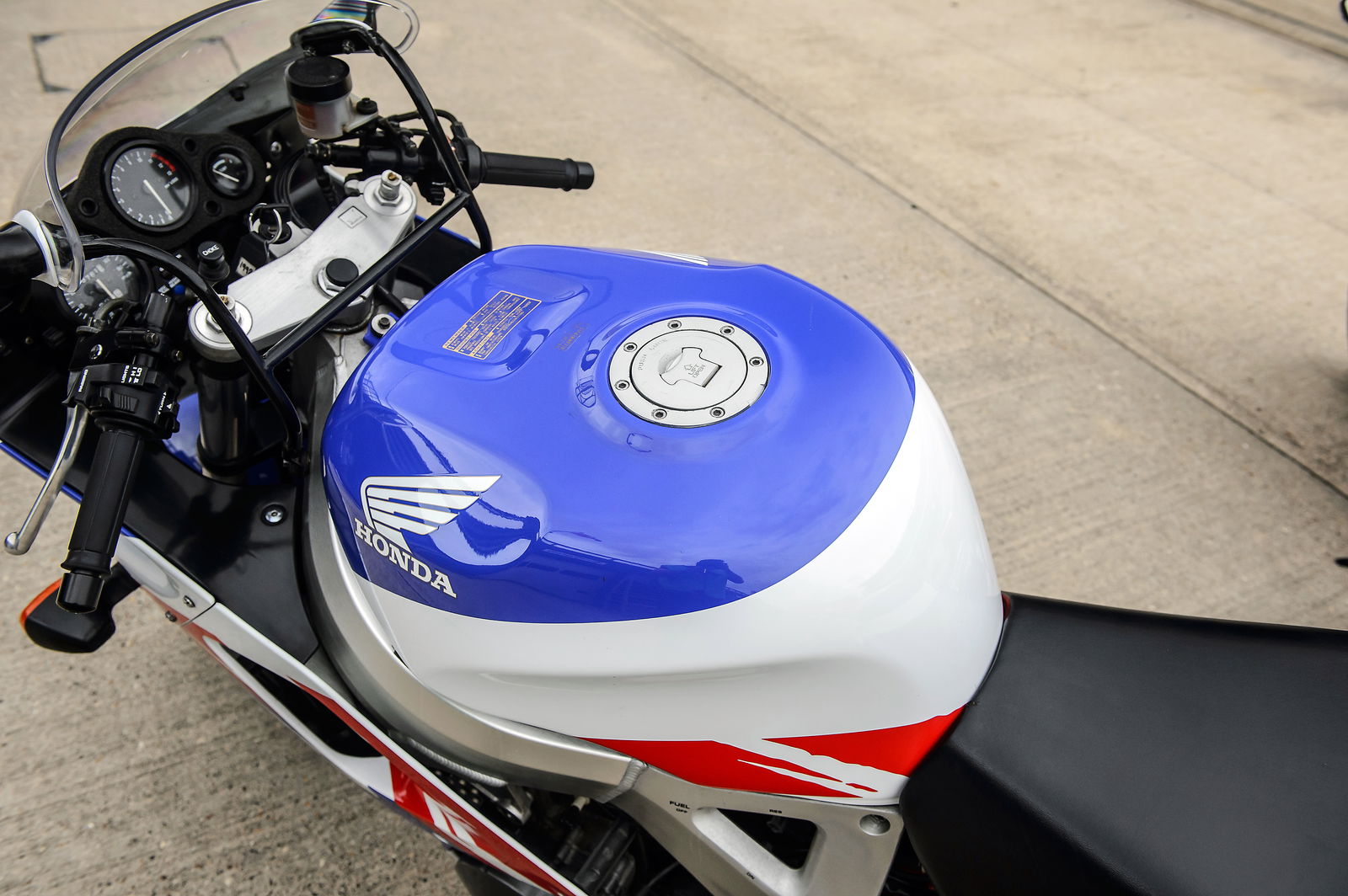
It's a different story with the brakes. Sadly, the old Honda feels like it needs some new pads at the front: there's little in the way of power, and I know that the four-piston Nissins should be giving better than they are. They need a massive squeeze to get any sort of stopping power, and there's no feel either. Even in their prime though, they'd not be on the same level as the huge radial Brembos on the 2017 bike. No ABS either of course, so you're on your own when it comes to controlling your stopping. Rear wheel skids are a breeze on the 893cc bike though, so there is that…
We're well away from Corby now, and we've come to a quieter, clearer, faster section of road. The lead rider opens it up for a bit of a blast, and the old motor under me clears its throat, and calmly, but definitely, goes a little bit bonkers. You might think that with 'just' 120bhp, there's little to fear here, but this is still a fast motorbike, no doubt. The delivery is fairly linear too, with no big steps or jumps in power, just an inexorable howl up through the revs. It's spoiled a little in the higher gears by the clutch, which is slipping a little, so I go a bit steadier to try and nurse it along. I'm also well aware of the dodgy brakes, so that cools my ardour a little more. But then I remember that the bike has fairly decent Bridgestone BT016 rubber on, and I wind it on again. Through some fast sweeping A-road bends, the Honda is supremely stable, filling me with confidence in its 25-year-old chassis. You could definitely still have a lot of fun with one of these.
Back at Rockingham, and I'm pushing hard for a spin on the track. The man in charge says no 'heritage' bikes on the circuit, but I whine like a little bitch in his face until he gives in. I think my killer point was pointing out that if I'd crashed a 2017 SP earlier in the day (not impossible!) it would have cost his budget £20k, while this 92 bike isn't worth a third of that…

So I manage to snatch a quick final session round Rockingham's bends. The track marshalls are looking at their watches and the sun is dipping, as I fire the old bus out of pit lane and into turn one. Now, the Bridgestones are good tyres, but that slipping clutch and those tired brakes, together with the opprobium I'd bring down upon my head if I put their precious heritage fleet bike in the gravel means I have a fairly gentle trundle round. Compared with the hoon I'd had on the 2017 bikes round here a couple of hours earlier, I was in proper Driving Miss Daisy mode, but the '92 bike still has plenty to offer. The chassis certainly feels up to a load more power than you have on tap, and that stable feel transfers well from the road. She's a little bit of a handful on the tighter turns, the fat old fuel tank perhaps giving the impression there's more mass than there is. But I've got a big grin under my Arai as I pull into the pits, and park the old Blade up for the night.
SO – what did we learn? Well, there's little to be said about a direct back-to-back comparison with the 2017 and 1992 bikes really. Quarter of a century is a long time in anyone's book, and while it's not quite on par with a week in politics, the differences between the two Hondas is massive. The new bike's electronics give a safety net that's totally absent on the old Blade, and while the old 'un is still a fine handling tool, the 2017 Fireblade, especially the SP, is in a different place in terms of brakes and suspension. In terms of engine output, 70bhp is 70bhp, and the 2017 bike obviously trounces its great-grandaddy.
But where the 1992 bike wins out is in its significance, and its epoch-making performance relative to its peers. The 2017 Fireblade sits a little behind its competitors for me on performance: the Suzuki GSX-R1000 is faster and better value, the Kawasaki ZX-10R is stronger on track and has oodles of WSB-winning kudos, while BMW's S1000RR offers more all-round utility and performance.
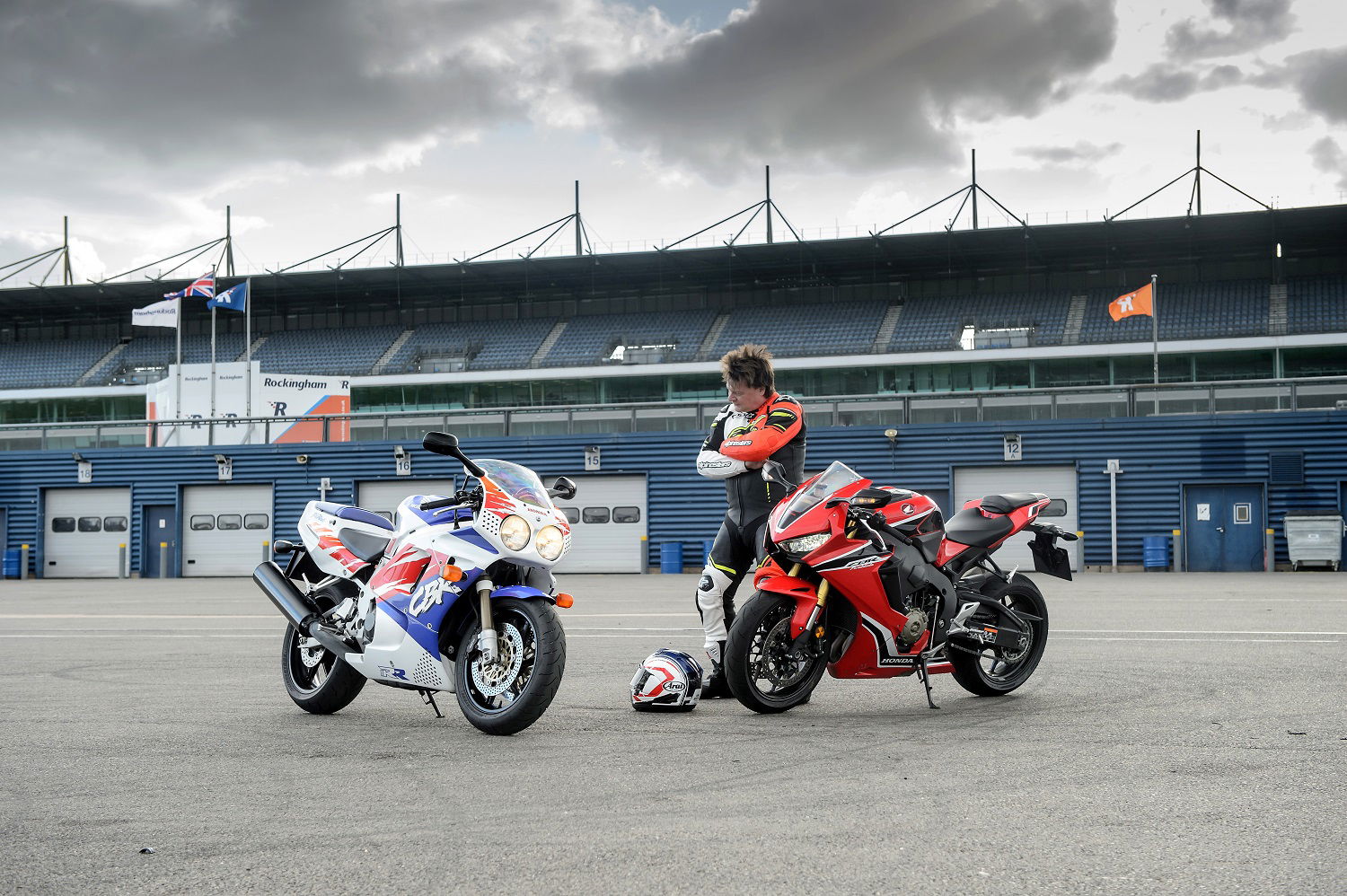
As I leave Rockingham on my super-trick Monster 1200S, though, I realise that my riding brain has definitely been altered a little by modern performance bikes as a whole. Electronic aids like ABS, traction and up/down quickshifters are common across the sector, especially the litrebike class. And once you spend a few thousand miles using them, you do get used to them, and miss them if they're absent.
Could you go back though? Hell yes! That 1992 FireBlade is much closer to modern biking life than my mundane 1992 existence of faxes, Kodacolor canisters, BT phone boxes and the local library reference section relates to modern working life. Honda's revolutionary nineties superbike definitely still has the cojones to do the business, even for an internet-enabled, smartphone-toting, 50-megapixel modern rider…
